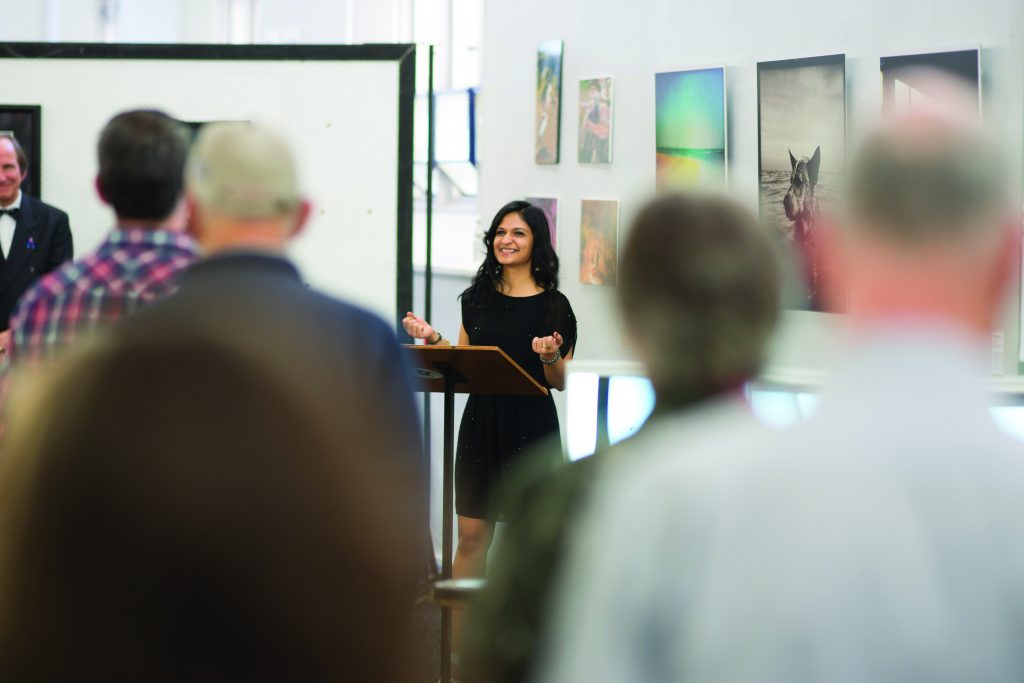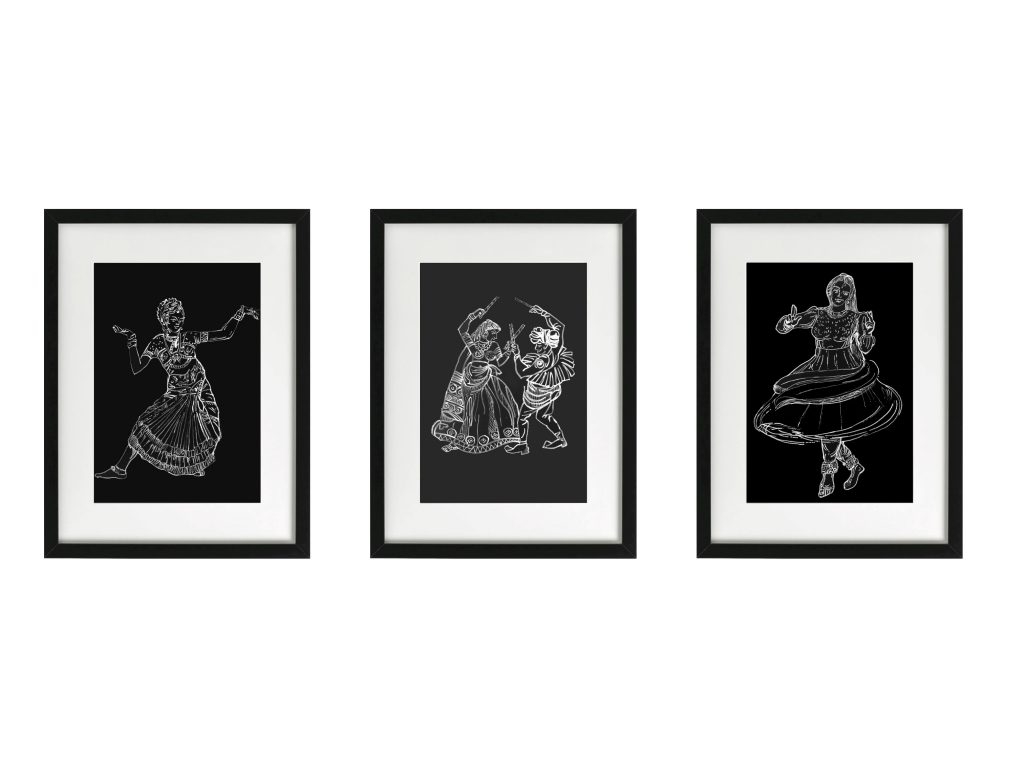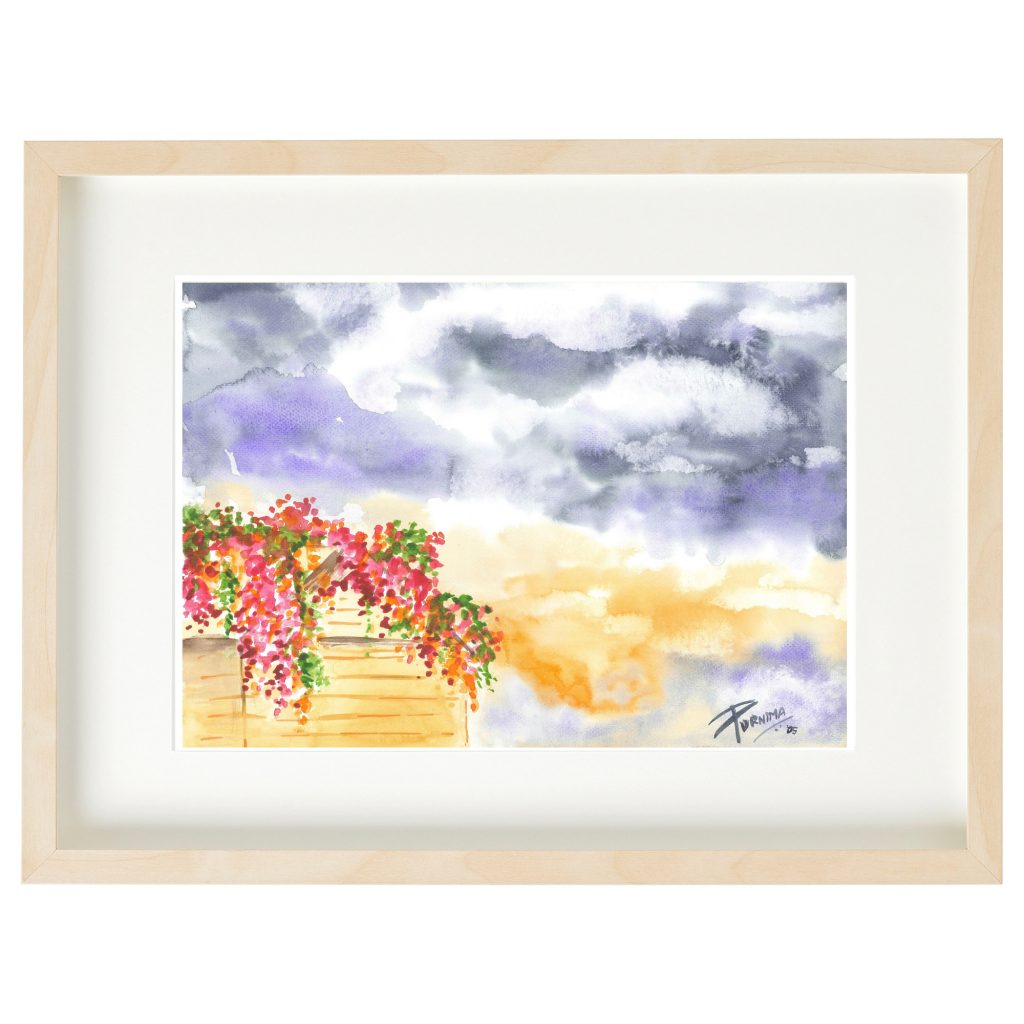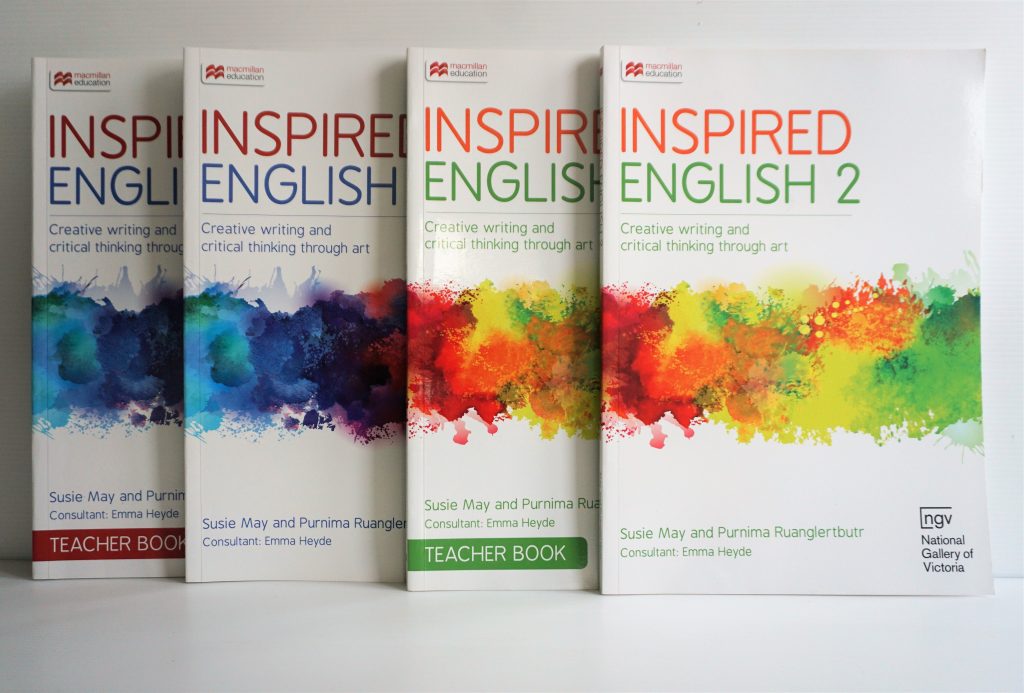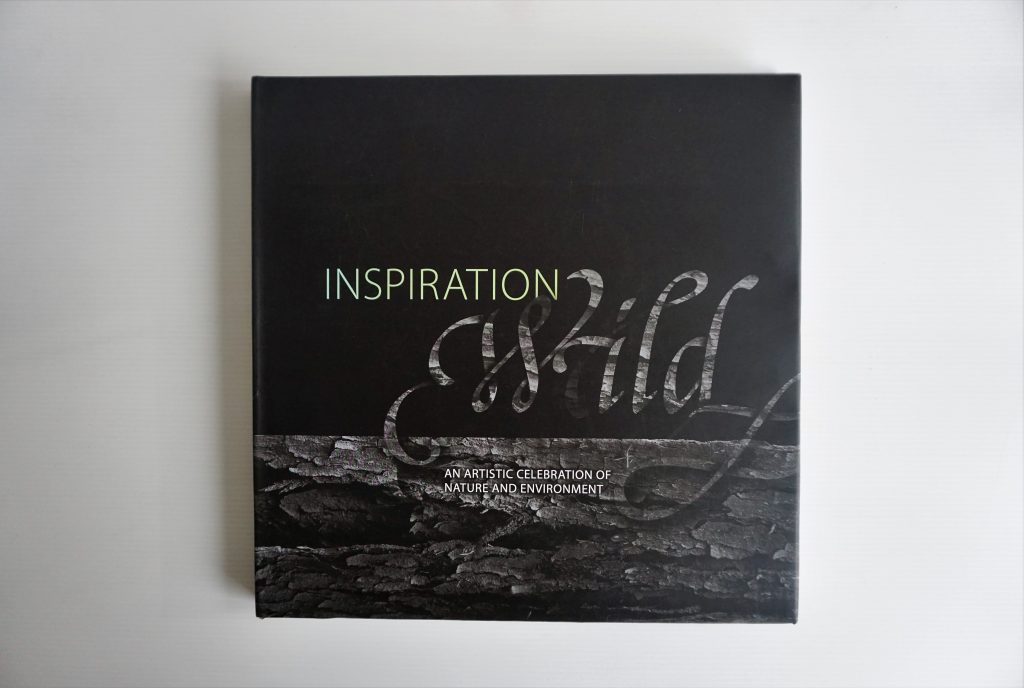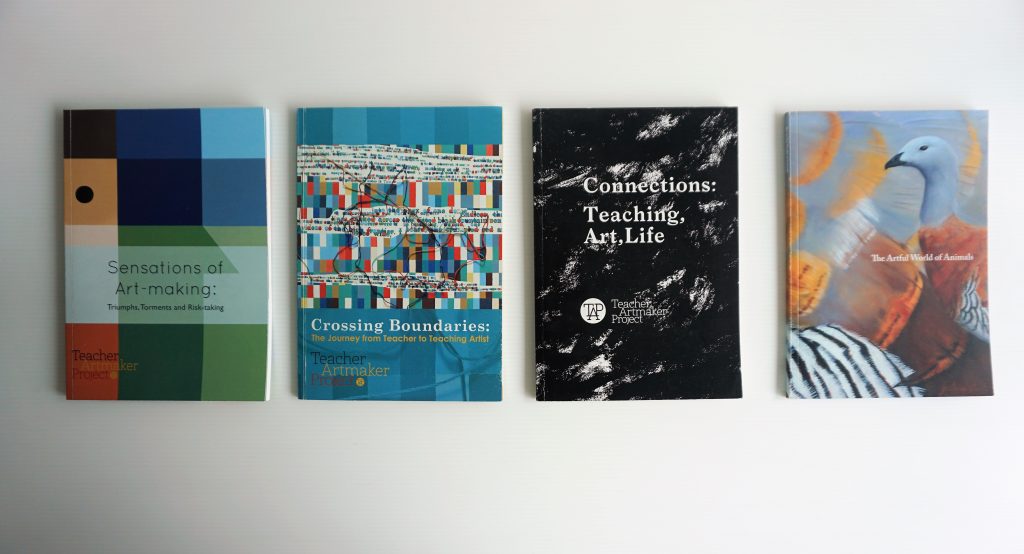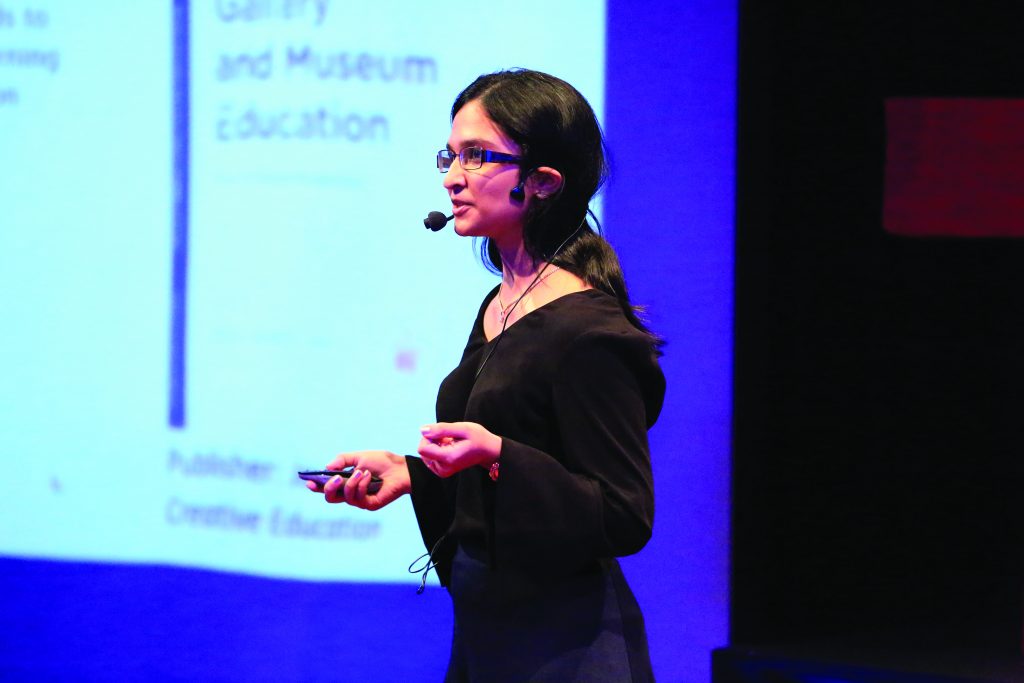She discusses her impressive journey with Masala.
By Ashima Sethi
When I had the pleasure of talking to Purnima Ruanglertbutr, I began the interview with a question: How would you define yourself? Not an easy question, especially for someone who wears many hats as an educator, artist, writer and curator. I was delighted by Purnima’s fiery confidence, “I describe myself as an amalgamation of all of them, as the artist-teacher. I’m an educator; an artist because I sell and exhibit my art in galleries as originals, prints, and merchandise; curator, because I manage art exhibitions and edit and publish exhibition catalogues; and I as a writer come under artist, too.”
So how did her journey begin? Purnima was born and raised in Thailand where she attended Bangkok Patana School, coincidentally the school where she currently teaches English Language and Literature. “I’ve come full circle!” she laughs, “I never thought I’d be back to where I started, but it’s exhilarating.” After graduating, she went to the University of Melbourne, Australia, to do a Bachelor of Creative Arts (Honours). “The degree appealed to me so much that I didn’t apply to anywhere else. I knew I wanted to major in creative writing, literature, and visual media, so that was the degree that allowed me to do everything that I love.”
She then received a scholarship to pursue a Masters of Teaching specialising in English and Art. “I didn’t stop there,” she explains, “I was driven to learn more about managing the arts, so I took the opportunity to undertake a Master’s of Art Administration at the University of New South Wales in Sydney.” After finishing her studies, Purnima dedicated her career to exploring the synergetic relationship between being a teacher and practitioner. She talks to Masala about her journey thus far.
Have you always wanted to become an educator?
In school, English and Art were my favourite subjects because I was taught by teachers who were so passionate about their craft. I had the thought now and then that I wanted to be like them and instil a love for the subjects in others. This largely came to fruition upon being rewarded the New Generation International Postgraduate Award from the University of Melbourne, which is given in recognition of being in the top one percent of the cohort within your undergraduate course – it is essentially a scholarship to pursue a full-time Masters in a degree considered a highly-skilled profession. That placed me into the education sphere in the broadest sense.
What do you think about the notion, ‘to know your craft you must be able to teach it?’
Not just know, but relish it and wholly engage in it professionally. Research shows that many artist-teachers question of their identity: “Where do I sit? Do I sit as an artist? An educator? Or am I in the in-between space?” With where I’ve come to arrive at, I certainly inhabit and exhibit this blissful union of both the creator and educator. Practicing what you preach and having a firm zest in what you do is at the forefront.
In addition to being an educator, you’re also a prolific artist. What do you love about the visual arts, and can you describe some of your work?
I view art as an expressive medium that enables one to both explore and reaffirm their own cultural identity. I consider myself an interdisciplinary artist that works across multiple mediums, so what that means is that often my art will inspire my writing and vice versa. I have exhibited widely across Australia and internationally. Examples of my recent art-making include my Heritage Collection, a series of photograms, fictitious portraits of Indian women and domesticated scenes that is currently being sold by Saatchi Art and on my website (www.purnimacreations.com).
The collection is important to me because I’ve always been fascinated by Indian culture – my heritage. I’ve worked on many other collections that boast Indian motifs, produced a watercolour collection that depicts symbols of Thailand, and I think that’s very uniquely me because I feel an affinity to so many places – art is a way for me, as a Thai-Australian of Indian ethnicity, to reconcile the question of “where I’m from”.
And what about your curatorial experiences?
A role of a curator is to professionally manage an art exhibition – this involves conceptualising an exhibition’s theme, selecting artworks to include that will tell a narrative within the viewing experience, deciding which works will go where, and to write and publish the exhibition catalogue. I got into curating after working in the National Gallery of Victoria, one of the biggest museums in Melbourne. I did an internship and was given the opportunity to work there and later at the Ian Potter Museum; in both these renowned institutions, I also led art and creative writing workshops for students of all ages, as well as educators.
Subsequently, I curated an exhibition titled The Artful World of Animals, which ran in conjunction with Melbourne’s Festival of Ideas – this centred around the need to protect wildlife. I got veterinarians who were also artists, to exhibit – of course, even my first exhibition was centred on the interdisciplinary nature of art. Thereafter, I curated four more exhibitions that received coverage in Australian newspapers and on the radio.
You’ve also authored several books, with a few you’ll be releasing in the near future. What are they about?
I’m published with Macmillan Education Australia on my four-part educational textbook series titled, Inspired English, comprising innovative activities designed to foster creative writing and critical thinking skills. I’m most proud of this series as it took ages to do!
I’ve also authored a hardback, coffee-table book called Inspiration Wild: an Artistic Celebration of Nature and Environment that was published for the launch of the Wildlife Art Museum of Australia, where it is sold. This project actually started at my exhibition, The Artful World of Animals – a prolific Australian wildlife artist told me that I’d be perfect for the role of editor. I worked with 60 prominent wildlife artists featured in the book, wrote the foreword and put it all together.
My curated exhibition catalogues are available online and at various Australian libraries. For example, Sensations of Art-making: Triumphs, Torments, and Risk-taking, is a collection of works by professional artist-teachers; Crossing Boundaries: The Journey from Teacher to Teaching Artist talks about that journey; and Connections: Teaching, Art, Life, which explores how these disciplines interlink. I’ve also published research papers in international academic journals and research books such as Gallery and Museum Education: Purpose, Pedagogy and Practice.
I’ll soon be releasing my debut poetry anthology exploring themes of women empowerment, self-growth, and self-discovery along with a new educational textbook focusing on developing creative writing skills.
Over the years, what have been some of your treasured accolades?
Most recently – receiving the Young Alumni Award by the Australian Chamber of Commerce was definitely one, as I’m also an Australian national, and the annual award recognises a young Australian working in Thailand for their contributions to the community. Others include The Thai-Indian Youth Achievement Award (TIYAA), being chosen for TEDx, receiving recognition for excellence in academic teaching in a lecturing capacity during my time in Melbourne, my books winning highly commended prizes in the Australian Educational Publishing Awards, and I’ve received several other art-based prizes, too.
One of your aforementioned achievements was being on TEDx, what did you speak about?
TEDx Talks are hosted at Bangkok Patana School every few years and I instantly applied because I saw it as a great opportunity. The talk called, Who Am I – Artist, Teacher or Both? is important because it centres on identity. In it, I challenge the common myth of ‘teachers don’t do, they teach’, and reverse it to, ‘those who can do, teach.’
I wanted people to understand that a career path is not necessarily linear, it is most often organic. The more we embrace the organic nature of careers, the more receptive we will be to take risks, to nurture our passions, and to be courageous. I’ve published a lot of research (unimelb.academia.edu/PurnimaRuanglertbutr) to do with the ‘teacher as practitioner’, and I’ve interviewed many professionals who have spoken to me about their challenges in balancing their artist-educator identities, with unfortunately, many relinquishing one or the other. In my talk I draw attention to this pressing issue and propose practical solutions.
As you continue to grow in your career, what challenges are you especially proud to have overcome?
I believe being a professional artist whilst educating is a testament to my overcoming of certain challenges. The key challenge is time, because the very nature of educating in itself is one in which you’re a giver most of the time rather than a receiver. But in honing your own craft, you are utilising your own talents whilst nurturing the talents of others.
This is why I’m proud of being able to manage my art and design, exhibition projects, writing and publishing. Through my plethora of experiences, I have learnt to recognise the relationship between art-making and education as one that is mutually beneficial.
What are your goals for the future?
Professionally, I want to continue making a positive impact through my educating across the local and global community by way of my lessons, books and workshops. Alongside, I want to exhibit even more globally as an artist, be a published poet and continue my editorial and curatorial services for causes that I stand for and themes that I can connect with. Above all, empowering voices of all ages through expressive, creative mediums.
Do you have any advice for young people who are just starting in their careers?
The first would be to embrace your talents and explore them. Be fearless in the pursuit of your dreams, and have an innate determination to fulfil them. Have an ongoing zest for knowledge, take risks, and set goals that you know you can’t compromise. Have an ongoing zest for knowledge, take risks, and set goals that you know you can’t compromise.
Any concluding thoughts?
Given that the focus of this magazine edition is about strong women, I just wanted to deliver the message of: you are capable of more than you believe, and you can master more than one passion to make your lives sing the very song that you had long composed the melody for. Having multiple passions and expertise in a range of disciplines is indeed advantageous, especially in light of our need to possess critical thinking, creativity, communication and collaboration skills as internationally minded global citizens.
An interdisciplinary career is intellectually rich, playful, textured and enables you to thrive without compromise. I think when one does that, life rewards you and your creative soul will thank you for it.
For more information about Purnima’s work, visit www.purnimacreations.com



